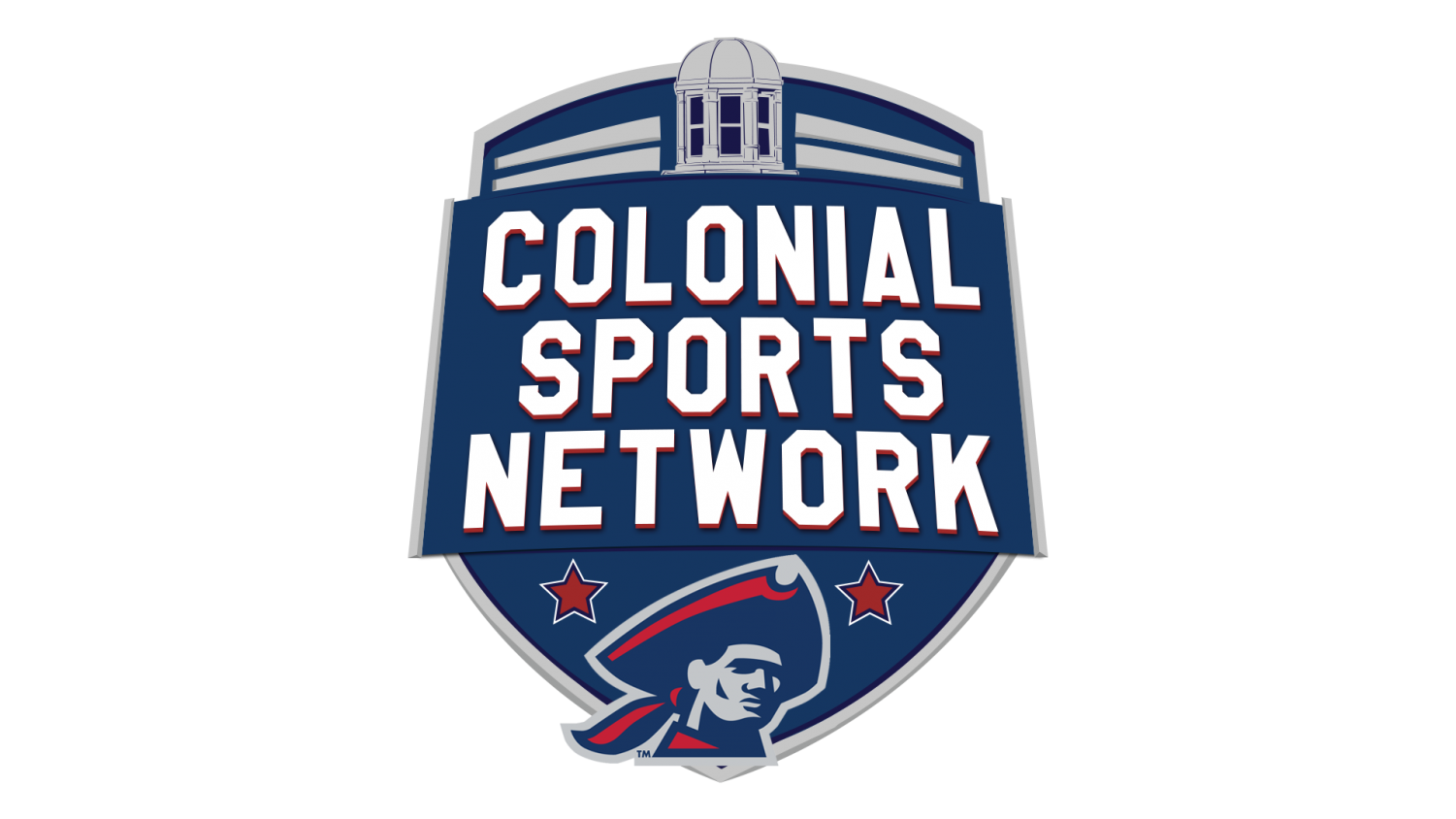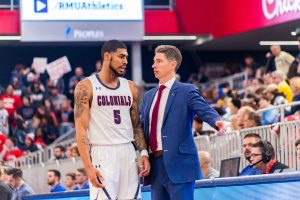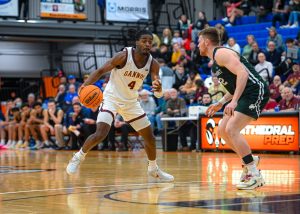Pittsburgh Division I basketball teams deal with new obstacles and uncharted waters with the transfer portal
The transfer portal brakes for nobody, especially in Pittsburgh college basketball. Image credit: Danica Freed/Cardiac Hill/USA Today/Getty Images
August 23, 2021
With over 1,700 players in the transfer portal and the number continuing to grow, the college basketball roster turnover has been hectic, but how has the portal impacted college basketball in Pittsburgh, specifically?
Perhaps Andy Toole, head coach of Robert Morris men’s basketball, said it best in an interview with Colonial Sports Network back in March. “Welcome to college athletics. This is the new norm.”
About one year ago, the NCAA began mulling around the idea of a one-time transfer rule which would allow players to enter the transfer portal without requesting a waiver to be immediately eligible or the penalty of having to sit out a season due to the NCAA transfer guidelines.
Due to the COVID-19 pandemic, the NCAA granted a blanket waiver for college athletes that had their transfer waivers denied which would grant them eligibility for the 2021-22 season, meaning that RMU forward Kahliel Spear, Pittsburgh’s Nike Sibande and Duquesne guard Ryan Murphy were all eligible to compete in the 2020-21 season.
When the blanket waiver was granted in December and gave athletes immediate eligibility, it seemed as if the writing was on the wall that large-scale roster changes were going to be quite frequent in college basketball’s near future.
After a college basketball season that was filled with pauses and drama came to a close in Indianapolis, all eyes were focused on the Division I Council to see if they would enact the one-time transfer rule. On April 28, the decision was made and the NCAA and the board of directors ratified the one-time transfer rule.
Even before the one-time transfer rule was put into place, all three Division I teams in the Pittsburgh area were affected by players jumping ship and entering the transfer portal.
Robert Morris has had its fair share of transfers to leave the program before the new one-time transfer rule even came into effect. Leondre Washington, Dachon Burke and Koby Thomas were just some of the key players over the past several years that decided to leave the program.
Pitt also has had to deal with transfers as well. Xavier Johnson, Trey McGowens and Ryan Murphy all decided to test the waters of the transfer portal after the 2019-20 season came to a close.
As for Duquesne, they have also struggled with retaining players as Spencer Littleson, Erik Williams Jr., Dylan Swingle and Frankie Hughes have left the Dukes over the past few seasons.
All three teams were also no stranger to players transferring during the season.
Former Robert Morris forward AJ Bramah was playing some of the best basketball of his collegiate career in the early portion of 2020, averaging a double-double in Horizon League play. However, with the team struggling and sitting in last place, frustration set in. After not traveling with the team to Wright State on January 29, Bramah announced that he would hit the transfer portal on February 12. With the absence of Bramah, the team struggled down the stretch, going on a 1-4 slide in their last five games of the season.
The Dukes lost their first guard on January 4 as Lamar Norman entered the transfer portal and not even a week later, Sincere Carry decided to transfer on January 10. Carry left Duquesne averaging around 12 points per game in two seasons.
On February 25, Pitt guard Au’Diese Toney entered the transfer portal after averaging 14.4 points and 5.9 assists per game. Losing Toney late in the season was a major blow to the Pittsburgh starting five as they went 1-3 in the final stretch of the season including an early exit in the ACC Tournament, falling to Miami 79-73.
When the college basketball season came to an end, a mass exodus of players started to jump from their respective teams. Some programs have had it worse than others, and the team that had to deal with roster turnover the most was Robert Morris.
It all started on March 10 with Cameron Wilbon becoming the first to hit the portal on the team. Just one day later, walk-on Terrell Brown left the team along with Dante Treacy on March 25. Freshmen Pat Suemnick and Trayden Williams and sophomore Olisa Ngonadi transferred in April. Since the start of the 2020-21 season, only four of the 14 athletes on the original 2020-21 roster remain on the team.
“It’s going to be the new norm. I’ve been saying this for a while now but there’s going to be a pool of guys that go into the transfer portal every year,” RMU head coach Andy Toole said of the transfer portal. “In time, I think that [the portal] will balance out and it’s a new wave, so everybody jumped on board this year, but I think there will be a lot of guys that utilize that option for themselves.”
Pitt also has had players move this offseason as both Gerald Drumgoole Jr. and Karim Coulibaly tested the waters of the transfer portal. Star forward Justin Champagnie entered the NBA draft and will most likely be selected in the first round on July 29.
“College basketball is constantly changing, you have to evolve and you have to adapt,” Pitt head coach Jeff Capel said about the transfer portal to the media in February. “Back when I was in school, guys weren’t leaving early, but it has gone up every year at a significant rate.”
For Duquesne, Marcus Weathers, Andre Harris, Jett Roesing and Chad Baker all hit the portal and Michael Hughes decided to exit for professional basketball. Duquesne head coach Keith Dambrot weighed in on the transfer portal’s effect on college basketball.
“College basketball is not how it used to be. You have to roll with the punches,” Dambrot said. “It’s a whole different environment now. People make decisions based on what they think is best for them. There are a lot of dynamics in play.”
Even though there have been so many roster moves over the past season, all three schools have had a lot of success with landing players in the transfer portal.
Robert Morris added a plethora of players from the portal, both from the DI level as well as the JuCo route. In total, Andy Toole and his staff have added eight players from the portal, including Rasheem Dunn, Ferron Flavors Jr., Brandon Stone, Justin Winston, Mattia Acunzo, Jaron Williams, Matt Mayers and Michael Green III.
After losing Justin Champagnie to the NBA draft, Jeff Capel had to find a replacement for his star forward. He and his staff went out and landed former Oakland forward Daniel Oladapo and former Monroe College (JuCo) transfer Mouhamadou Gueye. Capel was not done there, as he also landed guard Jamarius Burton and forward Chris Payton.
Losing eight players to the transfer portal may have posed a Mission Impossible-level threat for Keith Dambrot to rebuild his squad, but Dambrot saw the transfer portal as a blessing in disguise. Dambrot and his staff went out and recruited some strong players, landing Tre Williams, R.J. Gunn, JuCo product Leon Ayers III and Kevin Easley Jr.
“We were fortunate that our reorganization, our rebooting, our regrouping came at a time when there were 1,635 guys in the portal,” he said. “We landed not only high-quality players but high-quality people. It was the perfect time for us to change our dynamics.”
After everything that transpired over the past two years, such as a global pandemic, blanket waivers, an extra year of eligibility, new transfer rules and college athletes able to profit off of their name, image, and likeness, it is safe to say that we have entered in a new era of college basketball.
“I think that it is a good thing for people that are participants the players, and coaches they need to have a voice in how things happen moving forward,” Toole said. “It is an exciting and interesting time to be involved in college athletics where nobody knows how it is all going to play out.”
As time continues to pass, we will see the great game of college basketball evolve more, whether it be with the NIL or the transfer portal. The more we dwell on what has happened to teams in the past, the less time we have to think about how the game will continue to change.









